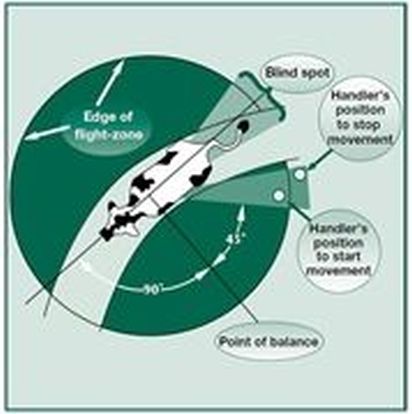3 - Manage cattle before sale and during mustering and transport to achieve best carcass dressing percentage and avoid downgraded meat and carcasses

Guidelines for managing cattle two to three weeks before sale and during mustering and transport
The total price received for your cattle can suffer if the carcase contains bruising. This can reduce the total weight of carcass receiving payment due to trimming of bruised meat from those parts not included in the AUS-MEAT bruise scoring areas. The price for the remaining (trimmed) carcass may also be reduced.
The causes of dark cutting meat and bruising can be controlled by managing the:
- yard weaning to accustom cattle to human contact in yard situations
- nutrition of animals over the last weeks before sale
- handling of animals immediately before and during transport
- handling and slaughter procedures on arrival at the abattoir.
The content of glycogen stored within the muscles of the animals at slaughter has a major influence on ultimate pH and eating quality of the meat. Eating quality is affected when there is too little glycogen present.
Good presale management maximises returns
When glycogen stores are depleted the pH of meat may exceed 5.7 and a darker, unacceptable meat colour develops. Muscle glycogen can be maintained by ensuring cattle keep growing for at least two weeks (preferably four weeks) before slaughter and are not unduly stressed before slaughter. The susceptibility of cattle to stress during handling and transport can also be reduced if they have been accustomed to contact with humans, particularly at weaning and if they are also handled using low stress stock handling techniques (see Module 6: Herd health and welfare).
Use feedback to fine-tune management of the production system
When available, abattoir feedback will inform you of the corrective actions to be taken to reduce bruising. If problems are identified, you need to consider the following corrective actions:
- only feed high energy supplements during the last three weeks before sale when it can be managed carefully to avoid nutritional disorders and competition for feed
- sell cattle before pasture quality falls below 11 MJ ME/kg DM. Very few native pastures would consistently meet the 11MJ ME/kg DM required to achieve growth and productivity required for this market, hence the focus on feedlots and/or finishing in higher rainfall pastures.
- avoid stressing animals during droving and transport to the abattoirs
- use appropriate ‘cattle moving’ practices
- avoid mixing mobs of cattle during droving, transport to and at the abattoirs
- use polled breeds or ensure horned animals are dehorned appropriately
- change yard and transport structures and systems to avoid bruising by ensuring that yards and loading facilities do not have sharp corners or areas where animals can form a crush. Ensure adequate constraint, no sharp edges and correct numbers of animals per compartment during transport
- ensure time off feed is most appropriate for the particular market outlet.
Tips for better cattle handling
Cattle have wide angle vision in excess of 300 degrees. To move cattle more easily, understand the ‘flight zone’ outlined in Figure 1 and become familiar with the following associated behavioural patterns:
- work with the lead animal – the others will follow
- position yourself adjacent to the head of the lead animal and at about 90° to the direction the mob is to be moved
- be at a distance appropriate for the particular mob (i.e. where your presence is recognised but the lead animal does not attempt to move away from you)
- be on the side of the lead animal that you wish the mob to turn away from (cattle are uncomfortable losing eye contact with you and are reluctant to turn with their back towards you)
- moving forward of 90° will cause the lead animal to slow down and moving behind 90° will either speed the animal or encourage it to turn towards you.

Figure 1: The flight zone surrounding cattle.
What to measure and when
- Use Meat Standards Australia (MSA) guidelines as standard operating procedure.
- Check compliance reports from the abattoir on carcass downgrades due to high ultimate pH, dark cutting meat and bruising. The location of bruising may indicate the possible cause so that appropriate action can be taken.
- Monitor the time cattle are off feed in relation to the target market.
- Weigh and assess cattle for fatness then draft into sale mobs preferably two to three weeks before sale to minimise stress and bruising.
Further information
- NSW Department of Primary Industries (2001) Agnote series on dark cutting.
- NSW Department of Primary Industries Primefacts no. 340 (2007), Dressing percentages for cattle.
